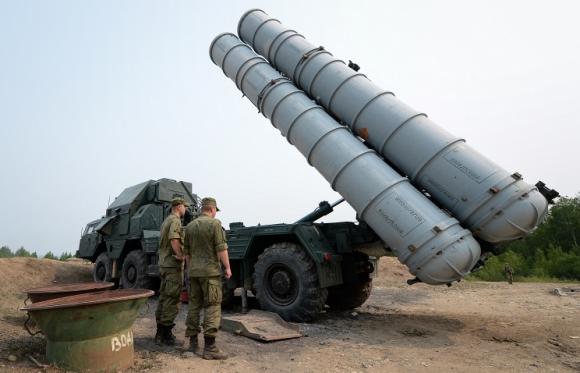"The contracts with Iran will be officially signed by the beginning of next year. Almaz-Antey is able to insure the new systems in 18 months from the signing of the contract ". This was announced by the spokesman of the Russian delegation present at the Dubai Airshow.
There is no information available yet, but the acquisition of the VM version of the S-300 system appears highly probable. The S-300VM is the latest version available for export of the Russian missile defense system. The SA-23 (NATO name of the S-300V) with its ability to hit high-altitude targets at a distance of 200 km, is capable of threatening civil and military air traffic well beyond Iranian borders.
According to Almaz-Antey, the Russian company that produces the system, the S-300 should be lethal against all fourth-generation fighters and, in any case, against all non-tech carriers stealth. The Russian company also claims that the S-300 have some ability to identify fighters stealth, but these are only assumptions. The S-400 version, on the other hand, was designed to intercept threats stealth Westerners.
The 800 million dollar contract for five S-300 defensive systems was signed in the 2007. The supply was then frozen following sanctions imposed by the United Nations on the Islamic Republic. Supply again called into question after the nuclear agreements signed last April between the world powers and Iran. If Iran deployed the S-300 VM ground-to-air batteries on the Gulf islands, it would project air coverage to Kuwait City, including the bases of Ali al-Salem, Ahmad Al-Jaber, Al-Minhad and Al-Dhafra. From that distance, the Iranians could cover the Zakum and Shariqah oil fields in Qatar. Finally, the air corridors used by international carriers across the Gulf could be banned by the Iranian threat during a crisis. In the latter case, however, there would be very serious international repercussions. The 9M82M missile known as "Antey-2500", (code-named NATO SA-23 Gladiator Giant) is specifically designed for tactical defense against medium-range ballistic missiles or enemy aircraft. He can follow up to 100 targets, being able to hire 12 / 24 at a distance of 200 kilometers (124 miles) and at height of 27 kilometers (about 17 miles). The SA-23 is considered immune to most Western ECM countermeasures with a operational tangency of thirty thousand meters. The Antey, once put on line, does not require maintenance for at least ten years, while its warheads are considered able to defeat even the most modern western ballistic missiles. It is driven by an inertial system with half-way radio updating, while in the terminal phase it relies on a semi-active radar. Probably the delivery of at least one 'V4' system, with a range of 400 km.
For the Russians, there is no aircraft (including the B-2, the F-22 and the F-35) capable of dealing with an S-400 system with impunity. The S-300 (and S-400) systems represent the highest point of Russian ground-to-air defense systems. They are designed to protect areas of strategic importance. Each battery can attack more than half a dozen targets simultaneously. The main difference from the previous strategic SAM generation is that the S-300 is a mobile system. Not only: the S-300 are networked. This means that in an integrated air defense system, the S-300 represents an impossible challenge to overcome for all existing fourth generation aircraft. F-15, F-16 and F / A-18: they would have little hope of getting out of an area protected by S-300.
The best option would be to use the "Global Strike Task Force": a combined task force of F-22 and B-2. The second option, instead, foresees a massive attack of JASSM-ER missiles (where ER stands for Extended Range) in a context that would require the presence of the EA-18G Growler. The problem, in the second option, is to preload missile targets. The enemy, in fact, could move the S-300 by detecting the launch of the missiles.
(photo: TASS)












